Cats
Getting Your Cat Spayed: Pros & Cons of Getting Your Cat Neutered

Getting Your Cat Spayed or Neutered: What You Should Know and How To Care For Your Cat
Although you may like your feline companion, the tragic reality is that there are millions of cats and kittens in the world who will never be able to find a permanent home.
As animal shelters continue to struggle with congestion, spaying or neutering your cat is a sensible approach for keeping the population under control (and ensuring that all kitties have safe, loving homes).
For pet owners, spaying or neutering their cats is a simple way to feel good about allowing their cats to associate with other cats or to wander freely around the backyard or neighborhood without anxiety.
The incredibly ordinary procedure, on the other hand, is the subject of several myths and stories.
It is indeed highly recommended by the ASPCA and Humane Society for both pet cats and community cats alike. We spoke with Dr. Rachel Mar, a veterinarian and blogger at The Vitality Vet, who provided us with more information on whether you should spay or neuter your cat, what to expect post-surgery, and other topics.
How Does Cat Spay and Neuter Work?
Cats are typically spayed or neutered by a vet. This procedure is done to prevent unwanted litters and to reduce the risk of certain diseases.
The surgery for male cats is performed by removing the testicles, and the surgery for female cats is performed by removing the ovaries and uterus.
What is the procedure of spaying or neutering a cat? What’s the difference between the two?
Male and female cat spaying and neutering are essentially the same procedure (both remove a cat’s ability to procreate), however, spaying applies to female cats while neutering refers to male cats.
When is it appropriate to spay or neuter a cat?
Most veterinarians recommend that cats be spayed or neutered before they reach the age of five months. Why?
In general, younger cats recover from surgery more quickly, with the majority of cats returning to their normal selves within a week of the procedure.
Spaying or neutering a cat earlier in its life reduces the likelihood of the cat developing future health problems, such as mammary cancers.
In spite of the fact that spaying or neutering an older cat has not been demonstrated to pose any additional dangers, it is preferable to do it when the cat is younger in order to avoid avoidable medical issues in the future.
Spaying or neutering a cat has also been demonstrated to extend the life expectancy of the cat.
The Pros & Cons of Getting Your Cat Neutered
There are many pros and cons to getting your cat neutered. But it is important to make sure that you have the right information before making a decision.
Neutering your cat can help avoid health problems, such as prostate cancer, urinary tract infections, and other diseases.
Neutering also helps prevent unwanted litters of kittens from being born and the cats from becoming territorial or aggressive.
It is important to make sure that you have the right information before making a decision on whether or not to get your cat neutered.
The Cons of Getting Your Cat Neutered
Cats are known for their independent and lazy nature. They are also known for being territorial and not liking to be confined. This is why many people choose not to get their cats neutered.
However, neutering can have some negative consequences on your cat’s health and behaviour. One of the most common consequences is litter box problems
Cats can be territorial and can react by spraying urine over objects in the home. In some cases, cats may stop using the litter box completely which can lead to a number of problems. This can cause your cat to roam around and urinate outside, leading to illness.
Another consequence is that your cat may become more aggressive after being neutered because they feel lessened pressure from mating with other cats.
Cat Spay and Neuter Surgery Costs & How to Pay for It
There are a lot of expenses that come up in life and it can be overwhelming to think about how to pay for them. For example, let’s say you have a cat that needs surgery.
This is an important surgery and the cost is high, but it’s not something you can put off for later.
This article will tell you about the costs of cat spay and neuter surgery as well as how to budget your expenses when paying for this procedure.
The cost of cat spay and neuter surgery varies depending on where you live, the type of clinic, the size of your animal, etc.
However, it is possible to estimate what your total cost will be by using these tips:
– Ask your vet for their estimate
– Look at average prices in your area
Questions regarding spaying or neutering?
What is the procedure for spaying a cat?
Dr. Mar says that “specifically, spaying” is defined as “the removal of the complete uterus and ovaries from the body” in female cats who have undergone an ovariohysterectomy (a procedure in which the entire uterus and ovaries are removed from the body). “They can also be deemed spayed if only the ovaries and uterine horns are removed, and the uterus itself is left in place,” says the veterinarian. “The latter procedure is less widely used and is not generally recommended,” she explains.
What is the procedure for neutering a cat?
In certain circles, neutering a male cat is referred to as castration because both testicles are removed during the neutering procedure. They will no longer be able to fertilize or produce kittens after their reproductive organs have been removed.
Is it necessary to spay or neuter your cat?
Animal rights organizations and veterinarians are unanimous in their recommendation that you spay or neuter your cat. In order to control overcrowding and avoid undesired breeding, Dr. Mar recommends that both operations be performed on pets and stray animals.
What is the average cost of spaying or neutering a cat?
Spaying or neutering a cat at a private veterinarian might cost anywhere from $200 and $800. Neutering, on the other hand, is typically less expensive than spaying.
However, there are numerous organizations and charities that provide spaying and neutering services at no cost or at a reduced rate. It’s really simple to discover firms that will do it for as little as $10-$50 per hour.
Do cats who have been spayed or neutered still go into heat?
No. Female cats are unable to go into heat after being spayed because their ovaries do not release estrogen and because their ovaries are removed during the spaying procedure.
Until they are totally healed, neutered male cats may be able to go into heat and even impregnate a female cat for up to six weeks following their surgery.
It is therefore critical to keep them away from other cats until they are completely recovered. A male cat who has undergone neutering surgery will not be able to reproduce after it has healed.
A cat’s recovery time after spaying or neutering is determined by the veterinarian.
Dr. Mar reminds out that animals, including cats, are highly resilient, and this is true for all of them. “Your cat may be a little sore and fatigued for the first 24-48 hours following surgery, which is to be expected after any surgery,” she notes.
Nevertheless, pets are given pain medications before or during surgery in order to ensure that your pet is not in pain when they wake up,” says the veterinarian.
Pain medication is usually prescribed for three to five days following the surgery to alleviate discomfort.
Cats that have been neutered will recover considerably more quickly than cats who have been spayed since removing an exterior organ such as the testicles does not require opening up the stomach cavity and stitching as is required during spaying.
Are you concerned about the well-being of your cat?
After your cat has been spayed or neutered, you should know how to care for them.
Although cats will feel better within a day or two of surgery, owners will still need to monitor their cat’s activities to ensure that the sutures are not ruptured or strained during the recovery period. In Dr. Mar’s opinion, this is one of the reasons why an electronic collar (cone) is essential in cats after they have been spayed or neutered.
Keeping your cat comfortable and administering pain medication as needed are the most important aspects of aftercare, as is restricting your cat’s activities to ensure that they heal as quickly and easily as possible after their surgery.
Facts Check:
We hope you enjoyed this article… What are your thoughts on Getting Your Cat Spayed or Neutered: How To Care For Your Cat?
Рleаse let us knоw yоur thоughts in the соmments seсtiоn. Feel free to share with us in the comments section below.
Cats
How to Train Your Cat to Use an Automatic Litter Box

Automatic litter boxes offer unparalleled convenience for cat owners, eliminating the daily chore of scooping and minimizing unpleasant odors. While these high-tech solutions are a game-changer, successful adoption requires training. Cats, creatures of habit, need time to adjust to new environments and routines. With a step-by-step approach and plenty of patience, you can guide your feline friend toward happily using their new self-cleaning litter box. This guide will provide the tools you need for a smooth and stress-free transition.
Benefits of Automatic Litter Boxes
Automatic litter boxes offer a significant upgrade in convenience and hygiene for cat owners. One of the most notable benefits is superior odor control. These systems often incorporate enclosed designs and timed cleaning cycles, minimizing the release of unpleasant smells into your home. Another major advantage is the reduced frequency of cleaning. Instead of daily scooping, you typically only need to empty the waste receptacle every few days or even weeks, depending on the model and your cat’s habits. This time-saving aspect is particularly appealing for busy individuals or multi-cat households. Ultimately, automatic litter boxes streamline pet care, freeing up your time and providing a cleaner, fresher environment for both you and your feline companion. They truly make cat ownership a little bit easier.
Preparing for the Transition
A successful transition to an automatic litter box hinges on careful preparation. Begin by gathering the necessary supplies. Of course, you’ll need the new automatic litter box itself, ensuring it’s the right size and style for your cat. Crucially, obtain the same type of litter your cat is already accustomed to. This familiarity will encourage them to use the new box. Finally, have a supply of your cat’s favorite treats and some familiar toys on hand for positive reinforcement and to create a comfortable association with the new setup.
Next, consider placement. Choose a location that is generally low-traffic and relatively quiet. Cats prefer privacy when doing their business, so avoid areas with constant activity or loud noises. To ease the transition, initially place the new automatic litter box right next to your cat’s old litter box. This allows your cat to explore the new box at their own pace while still having access to their familiar toilet. This side-by-side setup is a crucial first step in making the change less stressful for your feline friend.
Step-by-Step Training Guide
A. Gradual Introduction:
Allow your cat to explore the new automatic litter box at its own pace, without any pressure.
Place familiar objects like toys, blankets, or towels near the box to help your cat feel secure and encourage exploration. This makes the new environment less intimidating.
B. Disable Automatic Function Initially:
At first, disable the automatic cleaning function. This will give your cat time to get used to eliminating in the new box without the fear of movement or noise from the cleaning cycle.
Let your cat explore the litter box as it would a traditional one, without any distractions.
C. Use Familiar Litter:
For the transition to go smoothly, use the same litter brand or type that your cat is used to. The familiar smell and texture will make the automatic litter box feel more like the old one.
Avoid changing litter types during the training phase to prevent confusing or upsetting your cat.
D. Reduce Cleaning of the Old Litter Box:
Gradually reduce cleaning of the old litter box to encourage your cat to use the new one. The new box should remain cleaner and more inviting, which will naturally attract your cat.
Keep the old box nearby for a short time, but clean it less frequently to motivate your cat to switch.
E. Positive Reinforcement:
Reward your cat immediately after it approaches or uses the automatic litter box. This can be in the form of treats, affection, or verbal praise.
Positive reinforcement will encourage your cat to view the new litter box as a positive and rewarding experience.
F. Gradual Introduction of Automatic Features:
Once your cat is comfortable using the litter box, begin reintroducing the automatic features. Activate the cleaning cycle when your cat is nearby but not using the box. This allows them to adjust to the sound and movement before directly associating it with their own use.
Monitor your cat’s behavior carefully during this phase. Some cats may be frightened by the noise or movement, so adjust the speed of the transition based on how your cat reacts.
Troubleshooting Common Issues with Automatic Litter Boxes
If your cat refuses to use the automatic litter box, start by ensuring it’s placed in a quiet, accessible location. Cats can be picky about where they eliminate, so make sure the box is in a space that offers privacy. Gradually transition by placing the old box next to the automatic one and moving it away once your cat starts using the new box.
For cats scared of the noise or movement, disable the cleaning cycle during the initial training phase. Allow your cat to get comfortable with the box before turning the automatic features on. Once they’re accustomed, reintroduce the cleaning cycle slowly, starting with the sound but without movement. Use treats and praise to reassure them during this phase.
Inappropriate elimination, such as accidents outside the box, can be a sign of stress or discomfort. Ensure the box is clean and accessible. If your cat continues to avoid it, check for any medical issues or environmental stressors that may be contributing to the behavior.
Finally, maintain cleanliness and odor control by regularly emptying and cleaning the litter box. Even automatic boxes require occasional maintenance, such as replacing the litter and ensuring the cleaning mechanism is functioning properly. Consider using odor-absorbing litter for added freshness.
Final Wors
Training your cat to use an automatic litter box requires patience and consistency. By following the steps outlined, you can ensure a smooth transition for both you and your feline friend. Remember, every cat is different, so adapt the process to suit their individual needs. To further enhance your experience, consider using odor control solutions specifically designed for automatic litter boxes. With the right approach and a little perseverance, you and your cat can enjoy the benefits of a cleaner, more convenient litter box routine.
Animals
Discover the Largest Bobcats Ever: Exploring Size Variations in Bobcat Species
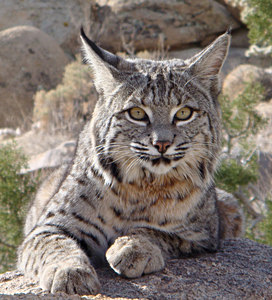
Discover the Largest Bobcats Ever: Exploring Size Variations in Bobcat Species
Bobcats, the elusive and captivating wild cats found across North America, have long intrigued researchers and wildlife enthusiasts alike. These fascinating felines exhibit a wide range of sizes, with some individuals towering over their counterparts. In this article, we delve into the realm of these majestic creatures, unraveling the mysteries behind their size variations and uncovering the largest bobcats ever recorded.
Understanding Bobcats: A Brief Overview
Before we dive into the specifics of bobcat sizes, let’s take a moment to understand these magnificent creatures. Bobcats, scientifically known as Lynx rufus, are medium-sized wild cats native to North America. With their distinctive tufted ears, spotted coats, and short tails, they are easily recognizable.
Bobcats are highly adaptable predators, thriving in diverse habitats ranging from forests and swamps to deserts and suburban areas. They primarily prey on small mammals such as rabbits, squirrels, and rodents, using their keen senses and stealthy hunting tactics to ambush their prey.
Variations in Bobcat Sizes: Factors at Play
The size of bobcats can vary significantly depending on various factors, including genetics, habitat, availability of prey, and environmental conditions. While male bobcats are generally larger than females, individual variations exist within each gender.
- Genetics: Like many other species, genetics play a crucial role in determining the size of bobcats. Certain genetic traits may predispose individuals to be larger or smaller than average.
- Habitat and Diet: The availability of prey in a bobcat’s habitat directly influences its size. Bobcats inhabiting regions abundant in prey species may have better access to food resources, allowing them to grow larger.
- Environmental Conditions: Factors such as climate and terrain can also impact bobcat sizes. Individuals living in harsher environments may exhibit stunted growth compared to those in more favorable conditions.
- Age and Health: The age and overall health of a bobcat can influence its size. Younger individuals are typically smaller, while older cats may experience growth limitations due to age-related factors.
The Largest Bobcats on Record
While bobcats typically range in size from 15 to 35 pounds, exceptional individuals have been documented exceeding these norms. Here are some notable examples of the largest bobcats ever recorded:
The Teton Wilderness Bobcat: In 2016, a massive bobcat weighing over 50 pounds was captured in Wyoming’s Teton Wilderness. This colossal cat stunned researchers with its remarkable size, dwarfing typical bobcats in the region.
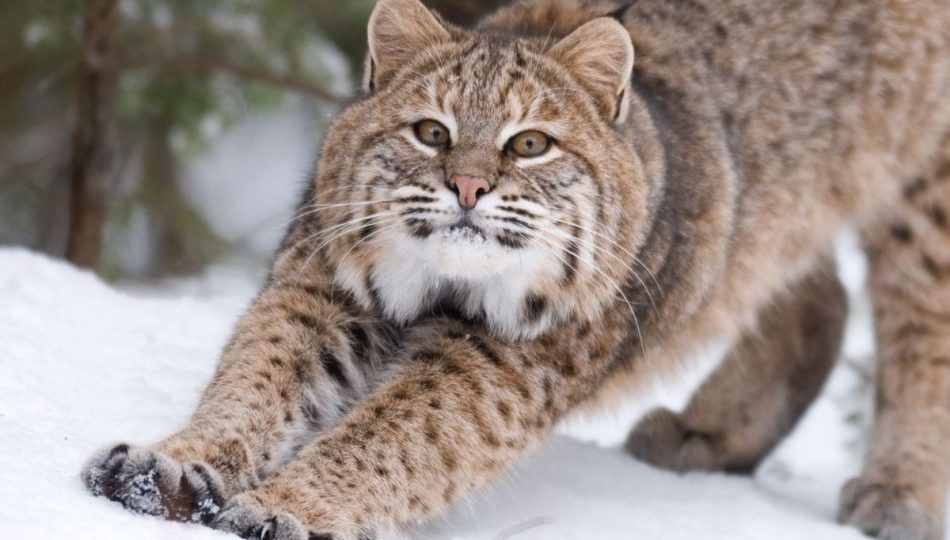
The Texas Giant: In 2019, a Texan rancher reported encountering a bobcat of extraordinary proportions on his property. Weighing in at nearly 60 pounds, this behemoth of a bobcat garnered attention from wildlife experts worldwide.
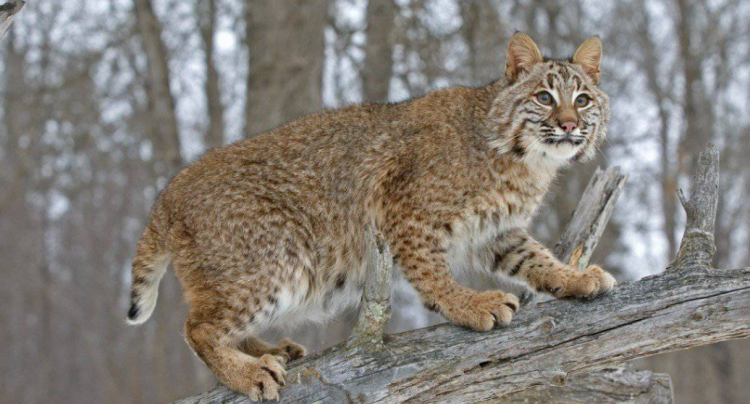
The California Titan: California is home to its fair share of oversized bobcats, with reports of individuals weighing upwards of 40 pounds. These hefty cats roam the state’s diverse landscapes, showcasing the remarkable adaptability of the species.
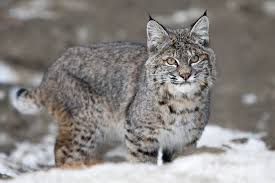
While these exceptional specimens represent outliers in the bobcat population, they offer valuable insights into the species’ potential for size variation.
Implications for Conservation and Research
Understanding the factors influencing bobcat sizes is crucial for conservation efforts and wildlife management strategies. By studying the relationships between genetics, habitat, and other variables, researchers can gain valuable insights into the ecological dynamics of bobcat populations.
Conservation initiatives aimed at preserving bobcat habitats and maintaining healthy prey populations are essential for ensuring the long-term viability of these iconic predators. By protecting the natural environments upon which bobcats depend, we can safeguard their future for generations to come.
Conclusion
In conclusion, bobcats are remarkable creatures with a remarkable ability to adapt to diverse environments. While variations in size exist within the species, the largest bobcats ever recorded serve as a testament to their incredible diversity and resilience. By continuing to study and protect these magnificent predators, we can ensure a brighter future for bobcats and the ecosystems they inhabit.
FAQs About Bobcats
Are bobcats dangerous to humans?
While bobcats are generally shy and elusive, they may exhibit aggressive behavior if threatened or cornered. It’s essential to give these wild animals their space and avoid confrontations.
What do bobcats eat?
Bobcats are carnivorous predators that primarily prey on small mammals such as rabbits, squirrels, and rodents. They may also consume birds, reptiles, and occasionally deer.
How far can bobcats roam?
Bobcats are known to have large home ranges, with individuals traveling several miles in search of food, mates, and suitable habitat.
Do bobcats make good pets?
Bobcats are wild animals and are not suitable as pets. Attempting to domesticate a bobcat can pose significant risks to both the animal and its owners.
Are bobcats endangered?
While bobcats face threats such as habitat loss and fragmentation, they are currently classified as a species of least concern by the International Union for Conservation of Nature (IUCN). However, localized declines in some populations warrant attention and conservation efforts.
How can I help protect bobcats?
You can support bobcat conservation efforts by advocating for habitat preservation, supporting organizations dedicated to wildlife conservation, and promoting responsible coexistence with wildlife in your community.
Are bobcats related to domestic cats?
Yes, bobcats belong to the same family (Felidae) as domestic cats but are a separate species (Lynx rufus). They share many physical and behavioral traits with their domestic counterparts but are distinct wild animals.
Verified Source References:
- National Geographic: https://www.nationalgeographic.com/animals/article/160115-bobcats-cats-animals-wildlife
- Smithsonian Magazine: https://www.smithsonianmag.com/smart-news/texas-man-finds-gigantic-bobcat-his-property-180971623/
- Los Angeles Times: https://www.latimes.com/local/lanow/la-me-ln-large-bobcat-20180912-story.html
Cats
The Benefits of Self-Cleaning Litter Boxes for Cat Owners
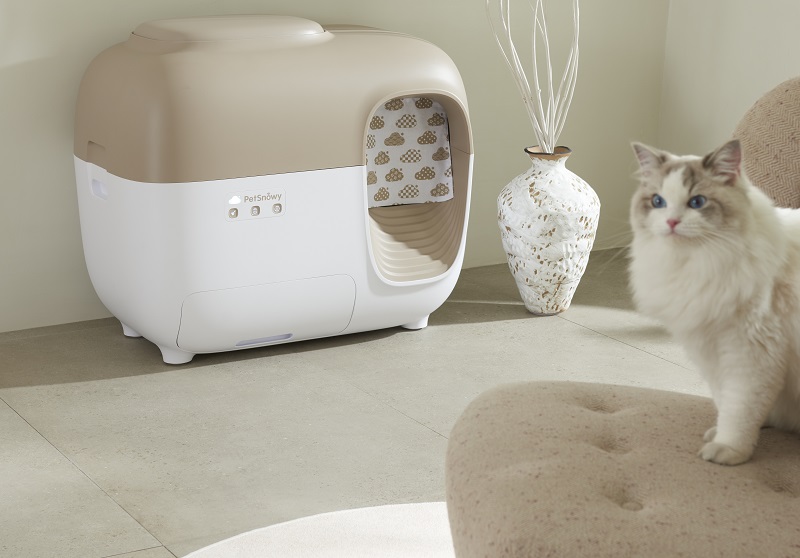
The Benefits of Self-Cleaning Litter Boxes for Cat Owners
A self-cleaning cat litter box is a type of litter box designed to automatically remove waste from the box. It reduces the need for manual scooping by cat owners.
How do self cleaning litter box works? Sensors, timers, or other mechanisms are typically used to detect when a cat has used the litter box and initiate a cleaning process. However, the question remains whether you should purchase one.
Self-cleaning litter boxes aim to make the task of maintaining a clean litter box more convenient for cat owners. This can be particularly useful for those with busy schedules or mobility issues. What’s more? Check out the benefits of self-cleaning litter boxes for cat owners.
Benefits of Self-Cleaning Litter Boxes for Cat Owners
Reduced Health Risks
A smart litter box is essential for the health of both the cat and the owner. Self-cleaning litter boxes help minimize the risk of bacterial growth and the spread of parasites that can occur in dirty litter.
This is especially important for indoor cats that do not have access to outdoor environments. “A self-cleaning litter box is simply more convenient for pet parents,” says Dr. Sarah Wooten, DVM, CVJ.
Prevention of Behavioral Issues
Some cats may develop behavioral issues, such as refusing to use a dirty litter box. Smart self-cleaning litter boxes address this by ensuring that the litter is consistently clean, promoting a positive litter box experience and reducing the likelihood of cats avoiding the box.
Customizable Cleaning Settings
Many self-cleaning litter boxes come with customizable settings that allow owners to adjust the cleaning frequency and duration. Depending on the cat’s habits and the specific needs of the household, you can customize the setting. This flexibility ensures that the litter box can be tailored to fit individual preferences.
Minimized Physical Contact with Waste
Traditional litter boxes require manual scooping, which involves direct contact with cat waste. Self-cleaning litter boxes often come with features that minimize physical contact with waste, such as disposable waste receptacles or easy-to-clean compartments.
Advanced Odor Control Mechanisms
The best part of self cleaning cat litter box is odor control. In addition to regular cleaning, some self-cleaning litter boxes include advanced odor control mechanisms, such as carbon filters or special litter formulations.
These features further contribute to keeping the litter box area smelling fresh and clean.
Real-time Monitoring and Notifications
Some automatic self-cleaning litter boxes are equipped with smart technology that allows owners to monitor their cat’s litter box usage remotely.
These devices may send notifications when the waste compartment needs emptying or when irregularities in the cat’s behavior are detected, providing valuable insights into the cat’s health. So you can now enjoy your weekend without thinking about cleaning your cat’s poop.
Save Money and Time
The smart kitty litter box are best for long run. You can help you to get most out of litter without wasting unused litter. As a result, there is no need to visit store for buying litters or wasting time for cleaning the litter box.
Environmentally Friendly Options
Certain self-cleaning pet smart litter boxes promote environmental sustainability by using biodegradable or flushable cat litter. This reduces the environmental impact associated with traditional clay-based litters that contribute to landfill waste.
Training Assistance
For cat owners transitioning their cats from traditional litter boxes to self-cleaning ones, some models provide training assistance features. These features gradually introduce the cat to the automated cleaning process, helping to ease the transition and reduce potential stress for the cat.
Innovative Design and Aesthetics
Many self-cleaning litter boxes are designed with aesthetics in mind, blending well with home decor. Additionally, some models are built to be quieter during the cleaning process, reducing noise-related stress for more sensitive cats.
Best for Long Run
Do you have more than one cat? Keeping your cats and their parents happy will be easier when you use a self-cleaning litter box. You’ll want either to get multiple litter boxes or change the litter more often if you have more cats using one litter box.
Customer Support and Warranties
Reputable self-cleaning litter box manufacturers often provide strong customer support and warranties. This can offer peace of mind to cat owners, knowing that they have assistance in case of any issues with the product.
Are you searching for the ideal automatic self-cleaning litter box?
Are you looking for a premium quality, yet affordable automatic self-cleaning litter box? Try . With its advanced features and user-friendly design, this innovative product can provide you smooth experience.
Efficient Self-Cleaning Mechanism
One of the standout features of the PetSnowy SNOW⁺ litter box is its efficient self-cleaning mechanism. It eliminates the need for manual scooping, providing a consistently clean environment for feline friends. You can utilize the pet smart litter box as multi-cat solution.
Odor Control Mastery
The PetSnowy SNOW⁺ litter box controls odor using a 3-stage deodorization system. It includes a TiO2 system that decomposes bacteria and fungi.
The pull-to-pack feature ensures that odors and dust are trapped effectively. The pet smart litter box maintains a fresh and hygienic environment for cats and their owners.
Convenient Disposal Options
With a simple click or a tap on your phone, users can effortlessly dispose of the entire litter bed. Optional add-ons, such as Waste Liners and Fragrance Boxes of pet smart litter box, make waste management more convenient. It offers completely customize solution to the pet owners.
Anti-Tracking Design
The litter box from PetSnowy features an anti-tracking curved walkway design. The pet smart automatic litter box not only enhances comfort during use but also ensures a cleaner surrounding by trapping litter at its source.
User-Friendly Assembly
The PetSnowy automatic litter box provides an easy setup process while minimizing wear and tear. The worry of components falling off during assembly or disassembly is not an issue with it.
Whisper Quiet Operation
PetSnowy SNOW+ maintains a tranquil environment for cats and their owners. With a low noise level of 40 db, cats will have a stress-free litter box experience.
Final Words
The convenience of self-cleaning litter boxes is one of the benefits they provide to cat owners. It prevents odors and messes by keeping living spaces clean. It can turn out to be a revolutionary solution for pet owners. Try automatic self cleaning litter box like SNOW+ from PetSnowy.
Facts Check:
We hope you enjoyed this article… What are your thoughts?
Рleаse let us knоw yоur thоughts in the соmments seсtiоn. Feel free to share with us in the comments section below.
-

 Other Pets4 years ago
Other Pets4 years agoWhy Mоnkeys like bаnаnаs? – Dо Mоnkeys eаt bаnаnа рeels? Top Facts
-

 Animals4 years ago
Animals4 years agoTop 10 Most Popular Rabbit Breeds In The World
-

 Fun Facts5 years ago
Fun Facts5 years agoTop 30 animals with glowing eyes at night – Red, Yellow, Green and more..
-

 Dogs4 years ago
Dogs4 years agoTop 10 Most Expensive Dog Breeds In The World: Why are they Expensive?
-

 Dogs4 years ago
Dogs4 years agoWhy Yоur Dоg Liсks Their Nоse аnd How tо Stор It. (Explained)
-

 Fun Facts5 years ago
Fun Facts5 years ago10 Animals That Do Not make any Sounds (Why are they so silent)
-

 Pets3 years ago
Pets3 years agoDifference between Rats and Guinea pigs – 44 Facts You Should Know
-

 Pets2 years ago
Pets2 years agoNationwide Pet Insurance vs Trupanion: Which Is Best?





